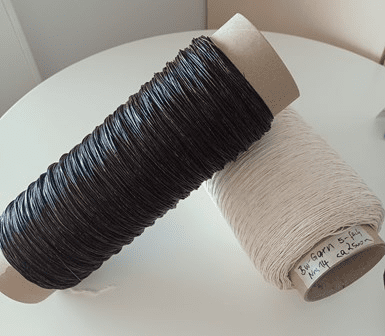The German Institute for Textile and Fiber Research (DITF) is developing a lignin-based bioprotective coating that extends the service life of textiles made from natural fibers, especially those used in civil engineering.
Depending on humidity and temperature, natural fiber materials can degrade in the soil within months or even days. In order to extend the degradation time and make them suitable for geotextiles, the DITF team is investigating the use of its lignin-based coatings, which are inherently biodegradable and do not produce microplastics in the soil. However, this degradation takes a long time in nature.
Lignin, together with cellulose, constitutes the building material of wood, and it is the "glue" that holds this composite material together.
In papermaking, only cellulose is usually used, so lignin is produced in large quantities as a waste material. The so-called sulfated lignin is still a fusible material. Moreover, textile production can handle thermoplastic materials very well. These facts then constitute the reason why DITF considers lignin to be suitable for use in geotextiles.

Lignin is inherently friable. Therefore, it is necessary to blend sulfated lignin with softer biomaterials. In this project, these novel biopolymer compounds consisting of brittle sulfated lignin and softer biopolymers were applied to yarn and textile surfaces by means of suitable coating systems. For this purpose, cotton yarns were coated with lignin at different application rates and evaluated.
Biodegradation tests are conducted using a soil burial test in a climatic chamber with temperature and humidity precisely defined according to standards and under realistic outdoor environmental conditions.
Ultimately the results of the DITF study are positive: the use of lignin coatings extends the service life of natural fiber textiles in several ways. The thicker the protective layer, the longer the protection. In outdoor tests, the lignin coating remained completely intact even after about 160 days of burial.
According to the team, lignin-coated textile materials enable sustainable applications. Providing an adjustable and sufficiently long service life for certain geotextile applications, the textile has the potential to significantly reduce its carbon footprint, in addition to still remaining biodegradable.
However, the transformation of lignin, previously used as a waste, into a new valuable material in the industrial manufacturing process of the textile industry still requires further research.

